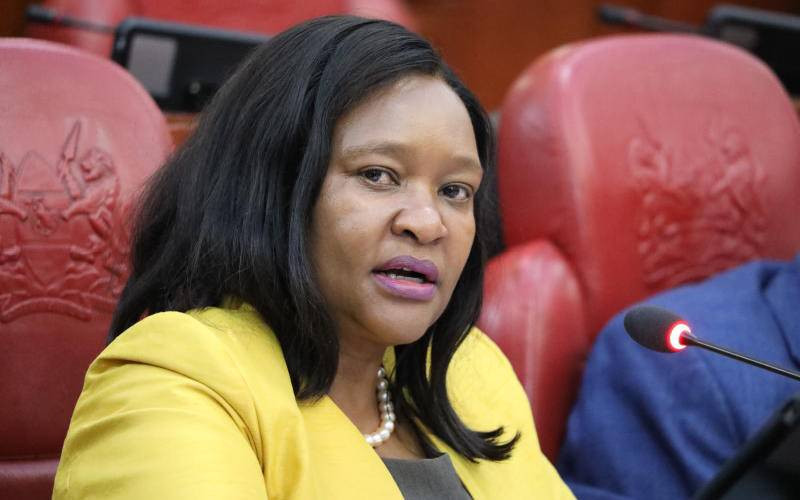
Many Kenyans are busy preparing themselves for the feast and revelry that mark the festive season we are in at the moment. As some celebrate and make merry, many others - in the thousands -will be grappling with where to get their next meal.
This reality has been exacerbated by the prolonged drought Kenya has suffered in recent months. Duly appraised of the drought and hunger situation, it is only fair that those among us blessed with surplus food and other goodies, spare some for our brothers and sisters in need of humanitarian aid.
So as we enjoy ourselves during this season, let us spare a thought for those we can bring a smile to by exercising a little compassion.
Aside from fleeting one-off shows of benevolence, the ultimate cheer we can pep the lives of the food insecure among us is one that promises a permanent solution to our hunger and malnutrition woes.
If we put our collective minds to it, we shall bring to an end the perils of drought, hunger and dietary deficiency. What we need is a radical change of mindset. We surely cannot give up on our quest to dignify our people by making ours a food secure country. Neither should we etch in our minds the notion that the ignominy of starvation is a curse we must brace ourselves for till eternity.
To change our circumstances, we should quit the view that Arid and Semi-Arid Lands (ASALs) are lesser farming abodes that essentially count for little. Since land is not elastic we cannot expand the area Kenya has always depended on for food production.
Instead we should borrow a leaf from countries like Israel that have turned the desert into thriving agro-production venture. Kenya is reeling from one of the worst ravages of drought in recent years.
There is no guarantee that this drought will be the last. Yet we should keep in mind that elsewhere, drought is the norm. Our take away from the ongoing drought in Kenya is that even areas of our country we hitherto believed were food secure for decades, have not been spared.
The most affected regions, nonetheless, are the ASALs that fall under my ministerial ambit. Having visited a number of ASALs lately and participated in distribution of humanitarian aid, I can confirm to my fellow countrymen and women that the situation on the ground was deteriorating rapidly prior to the government's intervention.
From where I sit, instead of crying for help endlessly, the hunger crisis our people have experienced year in year out should be a wake up call for us to put a stop to the kind of monumental loss of livestock and runaway starvation we have witnessed in the last few months.
The dire straits we have found ourselves in should awaken our consciousness to eliminate the vagaries of climate change, drought and recurrent hunger situation in various parts of Kenya once and for all.
As we seek to kick hunger out of our way, we must take a peek at how poorly we have managed food production and management globally and locally and make amends where necessary. To put things in perspective, let's have a look at some basic data.
According to a recent UNEP report dubbed "Food and food waste", 1.3 billion tons of food - a third of all food produced annually across the globe - goes to waste. Ironically, a third of the world's population suffers from starvation and malnutrition according to the same report. Clearly, food production and management is a crisis of global proportions, not just an African problem.
In 2017, Sh150 billion worth of food went to waste in Kenya. We lost potatoes, milk, beans and bananas worth Sh19.7, Sh12.4, Sh11.5 and Sh5.6 billion respectively. We should device better methods of food preservation and distribution to avoid the vicious cycle that forces us to spend more than the worth of the food we waste to feed people facing hunger.
Stay informed. Subscribe to our newsletter
So even as we make ASALs our future breadbasket, let's share what we already have, avoid wastage and cheer up those in need.
Merry Christmas and a happy 2023!
 The Standard Group Plc is a
multi-media organization with investments in media platforms spanning newspaper
print operations, television, radio broadcasting, digital and online services. The
Standard Group is recognized as a leading multi-media house in Kenya with a key
influence in matters of national and international interest.
The Standard Group Plc is a
multi-media organization with investments in media platforms spanning newspaper
print operations, television, radio broadcasting, digital and online services. The
Standard Group is recognized as a leading multi-media house in Kenya with a key
influence in matters of national and international interest.
 The Standard Group Plc is a
multi-media organization with investments in media platforms spanning newspaper
print operations, television, radio broadcasting, digital and online services. The
Standard Group is recognized as a leading multi-media house in Kenya with a key
influence in matters of national and international interest.
The Standard Group Plc is a
multi-media organization with investments in media platforms spanning newspaper
print operations, television, radio broadcasting, digital and online services. The
Standard Group is recognized as a leading multi-media house in Kenya with a key
influence in matters of national and international interest.






